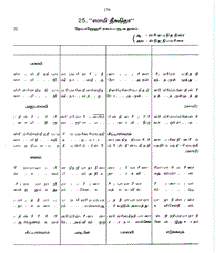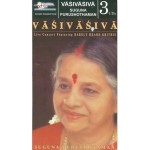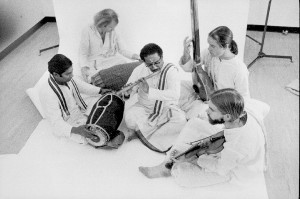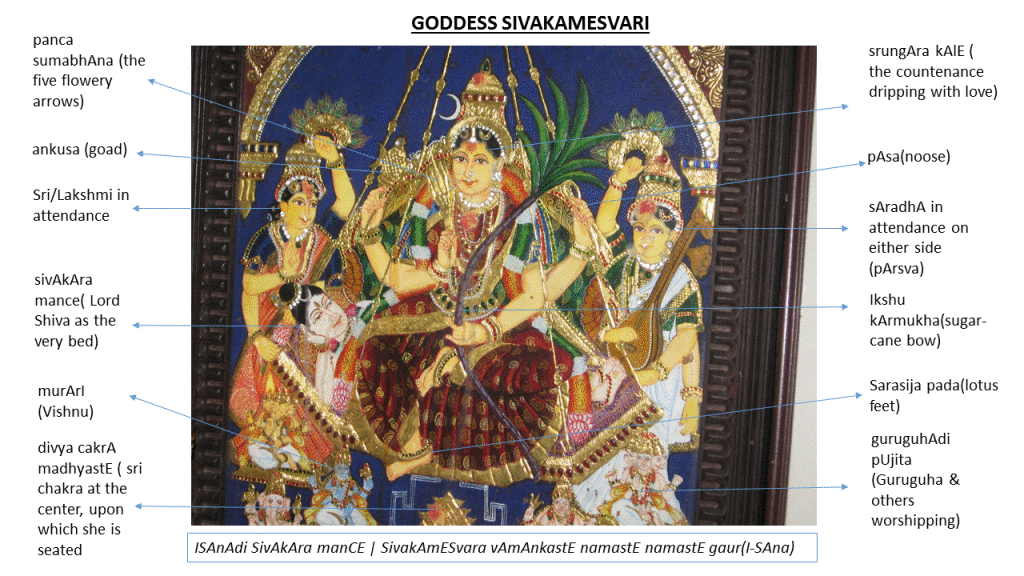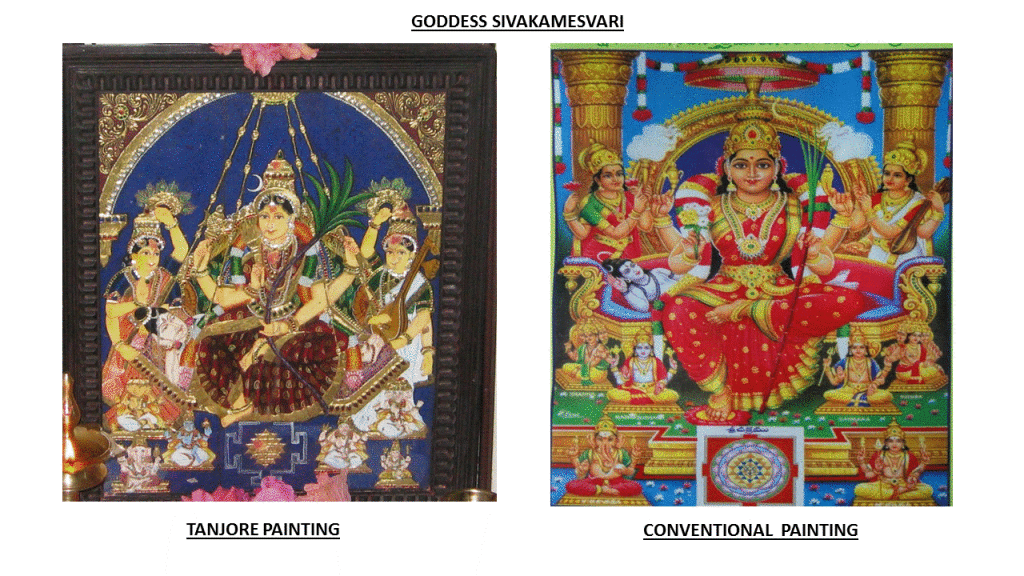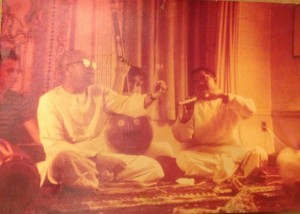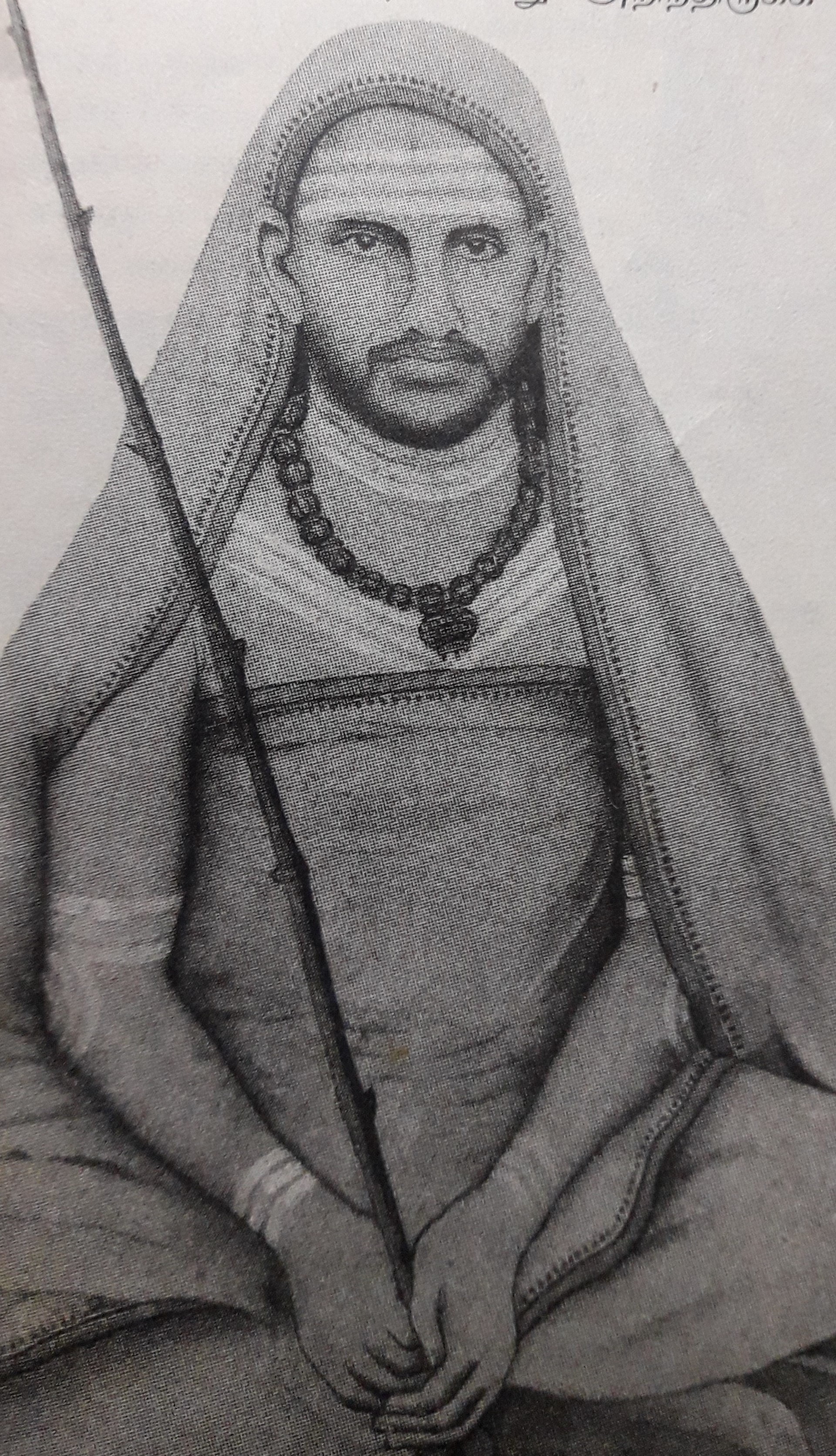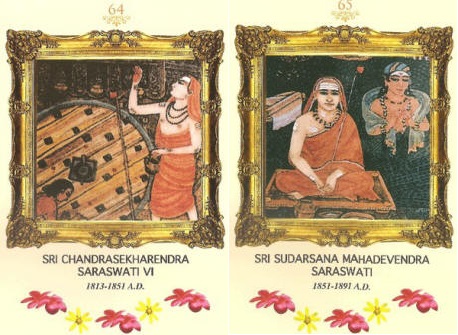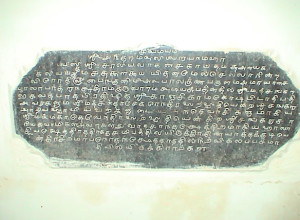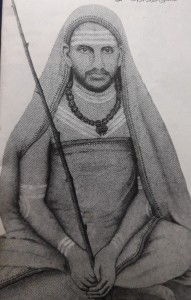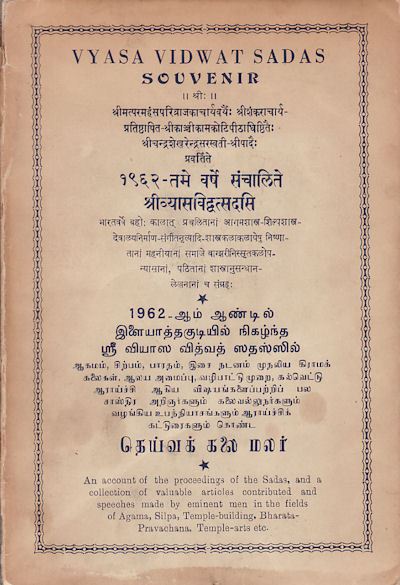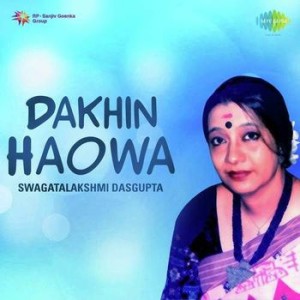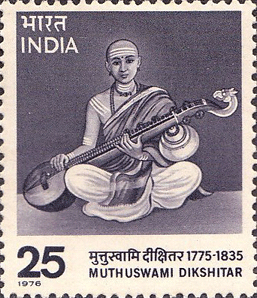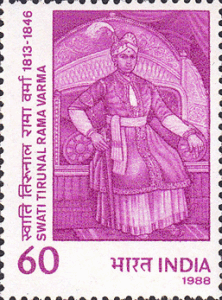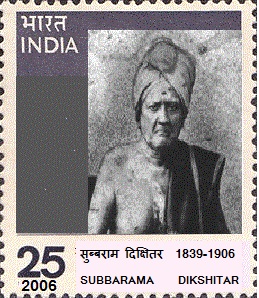[simple-author-box]
Prologue:
A perusal of 21st century music and musicology and comparing it with what it was in 18th century in the run up to the Trinity, would show that a bunch of changes have happened. For instance, one can notice that today’s construct of a raga is more svara/note based with accent on linearization and conformance with the melakarta system – with Janaka/Janya relationship at its heart. This was not the case with 18th century music. Some of the musicians/musicology/commentators, today refer to this older 18th century music as “Art Music” or the gold standard.
The 18th century construct of a raga, encompassing its architecture and design had a set of unwritten/informal rules or axioms. There are three important musicological texts from the 18th century which has been passed on to us, which I prefer to call as the Triad in this blog post consistently. They are Ragalakshanamu of Sahaji (circa 1710), Sangita Saramrutha of Tulaja (circa 1835) and the Anubandha to the Catudandi Prakashika (circa 1750). It is my humble view that a critical study of these three texts/Triad would without doubt help us sense this unwritten grammar of the music of the 18th century. This music was the legacy that was passed on or inherited by the Trinity to which they infused flesh and blood with their compositions.
Today much water has flown under the bridge. Given the reality of what has happened till today, one can even wonder whether it is even worth investigating if the changes are for the good or otherwise. For it is undeniable that the changes that have happened are today permanent and immutable. Nevertheless for a student and an observer of music it is important to understand the tenets of 18th century music.
There are a number of these so called architectural and design constructs of ragas – axioms that one can deduce from these Triad or to be more precise, from the study of the structure of the ragas that have been compiled in these three texts. And thankfully we have the Sangita Sampradaya Pradarshini which one can see, offers the perfect illustration for many ragas found in the Triad.
In this blog post we shall look at three specific raga architecture/design constructs or axioms that was part of 18th century music amongst many others.
They are:
- Ragas almost as a rule had jumps, turns and twists. Never were they lineal in their melodic progression.
- The mela/parent of a raga and the arohana/avarohana alone did not determine a raga, as it does today. Ornamentation of particular svaras and/or leitmotifs was a distinct feature for many ragas, much beyond a mere arohana/avarohana krama .
- Ragas were not contained within a particular murcchana progression and they had multiple flows to provide the aesthetic/melodic form that they were supposed to project.
In this blog post we will look at in detail about these constructs or axioms and practically illustrating it with two ragas – Devamanohari and Purnachandrika. We will be first be taking up Devamanohari.
These two fairly popular ragas were different in the 18th century, in comparison to what they are today in their popular form. So much so, we are constrained to call the 18th century versions of these ragas as archaic version while what we sing today are the modern version. We will demonstrate in this blog post how these ragas conformed to the above constructs/axioms-of 18th century architecture/design of a raga- and how we have in modern musicology dispensed with these axioms with the result their melodic contours have now changed.
The question if this change is better or not is left to the discerning listener/connoisseur of music.
AN OVERVIEW OF THE AXIOMS:
Before we embark on the illustrations with the ragas, let us seek to elaborate the axioms which we introduced in the previous section.
AXIOM 1:
In the 18th century musicology, many ragas and even the rAgAngAs or the parents were non-linear or vakra in their so called complete arohana/avarohana or svaragati, to employ 18th century terminology. For example Kambhoji which was considered a mela (vide the schemata employed by Paidala Gurumurti Sastri, discussed in our earlier blog) had its svara progression like this :
S R2 M1 G3 P D2 S
S N2 D2 P M1 G3 R2 S
Not only was Kambhoji supposed to have a vakra sancara MGP, it wasn’t required to sport all seven svaras in its arohana and avarohana considered separately and yet could be a rAgAngA. Today every musicological text book would give Kambhoji’s arohana/avarohana in a linearized fashion (watch the GMPD) only as:
S R G M P D S
S N D P M G R S
And this is the legacy of the 19th century musicology. And neither can Kambhoji be a mela raga today as it is not krama sampurna in its arohana also. Jumps, bends, turns and twists were the ways in which a svaragati or the melodic progression of a raga – be it a parent or child- went. Aesthetics warranted this feature. A raga to be appreciated aurally with rakti needed to have vakra sancaras as its body without which no aesthetics or rasa could be imparted.
This axiom or rule/construct implies that vakra sancaras are the rule for almost all ragas and lineal progression is an exception.
AXIOM 2:
Today a raga is simply defined by its parent mela and the svaras from the parent it is supposed to inherit from the parent for its arohana/avarohana. Sri K V Ramachandran, the much feared critic of the early 20th century likened this janaka-janya scheme and its obsession with mela numbering much like how convicts were given identifying numbers in a penitentiary! Beyond the pale of the mela and the arohana/avarohana, for 18th century musicians and musicologist ragas had embellishments such as gamakas and leitmotifs which were unique to the ragas and helped in identifying the ragas. This feature has been dispensed with in the case of many ragas.
AXIOM 3:
Today the progression of a raga as indicated in its arohana and avarohana is the only way one can move from sadja to pancama to tara sadja, in any sthayi or octave. In the 18th century the melodic movement not only included linear but also vakra/alternate sancaras as well. In other words multiple courses of execution for a raga were available in a given sthAyi. So in a raga if there were alternate courses and if the progression/sancara cannot be brought within the ambit of its arohana/avarohana, in their modern form we can find that the alternate courses have been axed/dropped/deprecated in the raga.
Let’s move on to individually look at the ragas and see how these axioms which defined their melodic body in the 18th century, were deprecated/dropped sometime during the 19th century perhaps which resulted in their truncated modern forms.
While we are able to establish the existence of these axioms implicitly from the Triad, we are fortunate that practical exemplars are provided for these 18th century raga architecture/design principles through the kritis of Muthusvami Dikshitar with notation in the Sangita Sampradaya Pradarshini of Subbarama Dikshitar. The rendering of the exemplar kritis, with fidelity to the notation in SSP thus provides us with the evidence as well as the opportunity to understand what the world of these ragas was in the 18th century.
Let’s take up Devamanohari, by first considering its form today.
MODERN DEVAMANOHARI:
Devamanohari is a beautiful and appealing raga, derived from Sriraga/Kharaharapriya rAgAnga/mela 22. The following are the noteworthy features of modern Devamanohari, on the authority of the Sangraha Cudamani which is relied upon by modern musicologists as the Bible for raga lakshana.
- Devamanohari falls under mela 22 and the notes we use in this raga are S, R2, M1, P, D2 and N2.
- It is an audava upanga janya of mela 22 lacking gandhara both in arohana and avarohana while dhaivatha is vakra in avarohana alone.
The defining arohana/avarohana krama for the raga under mela 22 is :
S R M P D N S
S N D N P M R S
As one can see that almost all compositions that we hear today including those of Tyagaraja, Gopalakrishna Bharati, Ponnnayya, Pooci Srinivasa Iyengar, Papanasam Sivan, G N Balasubramaniam, and Mysore Vasudevacar are today notated and rendered only in the above form of Devamanohari. The notations of the Devamanohari compositions not rendered on the concert stage, but available in notation form such as those of Kotisvara Iyer or Walajapet Venkataramana Bhagavathar are also in this form only.
The key attribute of this modern form of Devamanohari that I seek to draw particular attention is the usage of PDNS, the complete lineal ascent phrase in the uttaranga of its arohana.
MODERN DEVAMANOHARI- DISCOGRAPHY:
Let us now move to renderings of (modern) Devamanohari to complete our understanding as to how it is actually presented in concert recitals. Tyagaraja’s classics including ‘kulabirudunu’, ‘evarikai avataramu’ and ‘ kannatandri napai’ along with Mysore Vasudevacar’s ‘palukavademira’ are often encountered in the concert circuit.
Presented first is the exposition of this raga and a kriti therein by Sangita Kalanidhi Smt M L Vasantakumari. She as well as her guru late Sangita Kalanidhi G N Balasubramanian were known to render this raga with great felicity along with its close sibling Andolika.
https://www.youtube.com/watch?v=X6MCSgNXTow
Sangitakalanidhi Semmangudi Srinivasa Iyer renders ‘kannatandri nApai’ with rapid fire kalpana svaras.
https://www.youtube.com/watch?v=mJKTGjLcCl4
Presented next is a consolidated & concise presentation of an alapana, elaboration – neraval and svaraprastara of modern Devamanohari by Vidvan Neyveli Santhanagopalan who takes the pallavi line ‘mahAdEva manohari’ of Ponnayya, for elaboration.
https://www.youtube.com/watch?v=gSZvQPPoye4
Other renderings which can be profitably listened to, from recordings in the public domain include the pallavi in Devamanohari by Sangita Kalanidhi G N Balasubramanian and the rendering of Gopalakrishna Barathi’s ‘yArukkUdAn thEriyum’ by Centenarian Dr S Ramanathan, for which he was known for.
Presented next is a rare composition in Devamanohari. The late Sangita Kala Acharya Dr S Rajam a repository of many rare kritis renders Pooci Srinivasa Iyengar’s rarely ‘samayamidE yani dalaci’ in rupaka tala ( an excerpt from a commercially available album).
Attention is drawn to the pithy cittasvara which reiterates the PDNS in its body.
Tana varnams are the best repositories of raga lakshana. Arguably the older and most rendered varnam is ‘palumAru’ of Kothavasal Venkatarama Iyer. Here is Sangita Kalanidhi R K Srikantan rendering it.
Apart from the aforesaid tana varna of Kothavasal Venkatarama Iyer who was a disciple of Manambuchavadi Venkatasubbayyar, a disciple of Tyagaraja we have varnas in the raga chiefly from Walajapet Venkataramana Bhagavathar ( cauka varnam- khanda ata – ‘ninnE entO vEdi’) & Muthaiah Bhagavathar ( tana – adi – ‘ninnu nEra nammi’).
The key point to highlight is that in all these compositions and also in alapana and neraval/svaraprastara we see PDNS plain and unambiguous in its usage, in line with the stated lakshana in Sangraha Cudamani.
In conclusion for this section, we can observe that the theoretical construct as per Sangraha Cudamani and the practical lakshana that we see through renderings points to an unambiguous structure of SRMPDNS/SNDNPMRS for Devamanohari as its modern day form.
Having taken stock of this, we now wind the clock back to discover what Devamanohari was once upon a time, in the 18th century.
THE ARCHAIC/OLDER DEVAMANOHARI:
Devamanohari is not a very old raga. It must have been born during the closing quarters of the 17th century, for Venkamakhin in his Caturdandi Prakashika (A D 1636) does not deal with this raga. The earliest/first reference to this raga is in Sahaji’s Ragalakshanamu, dateable to circa 1710. Sahaji and his successor Tulaja (Sangita Saramrutha circa 1736) have in their works recorded Devamanohari as it was in the early quarters of the 18th century well prior to the times of the Trinity. Tulaja and Sahaji’s account are virtually the same. Their account of Devamanohari is as under:
- The raga is shadhava
- Dhaivata is skipped over both in the arohana and avarohana, implying it is vakra either ways.
- PDNS does not occur. It is only PNNS which adorns the raga’s uttaranga.
The point as to Subbarama Dikshitar tabulating it as a ‘bhashanga’ janya of Sri raga mela ( # 22) has to be provided here. For all 18th century authorities the term bashanga connoted a meaning different from what was ascribe to it today. And Subbarama Dikshitar was merely reiterating/carrying it forward in the SSP, which he ought to have clarified. Suffice to say that older Devamanohari did not have any note foreign to the 22nd mela to which it belonged to, similar to modern Devamanohari.
In comparison to the modern lakshana of Devamanohari as practiced today and as evidenced by the Sangraha Cudamani, one can immediately note two divergences:
- The arohana uttaranga prayoga is PNNS for Sahaji and Tulaja as found in the gita and thAya exemplars that they provide. Otherwise right from mela, to the notes, to the svaragati (otherwise) and the ubiquitous Devamanohari leitmotif namely SNDNP are all the same.
- PDNS is not to be used. In other words dhaivatha is vakra in arohana also.
After Tulaja’s Saramrutha (dateable to 1736 or thereabouts) the only other lexicon of ragas/musical work dateable to that period of 1700-1750 is the Anubandha to the Caturdandi Prakashika, the authorship of which is attributed to Muddu Venkatamakhin. Subbarama Dikshitar’s SSP is a commentary on the same and we can examine the same to verify the lakshana of Devamanohari.
According to Subbarama Dikshitar, on the authority of the lakshana shloka found in the Anubandha, the melodic contours of Devamanohari is :
S R M P D N P M P N N S
S N D N P M R S
The raga lakshana narrative of Sahaji and Tulaja is maintained in the SSP/ Anubandha without any change. In other words:
- The raga is shadhava, having 6 notes together in the arohana and avarohana.
- Gandhara is varjya or totally excluded.
- Dhaivata is vakra both in arohana and avarohana
Attention is invited to the longer arohana krama duly incorporating both the vakra dhaivatha and also the janta nishadha. In sum, all 18th century musicologists record Devamanohari identically and Subbarama Dikshitar reiterates the same in the SSP. The sancara or svaragati of older Devamanohari in line with axiom 1 above, made dhaivatha vakra both in arohana and avarohana, with PDNS not being permitted.
Subbarama Dikshitar does not provide a very detailed commentary on the raga lakshana. Nevertheless the exemplars that he provides, namely the sole kriti of Muthusvami Dikshitar ‘ bhArati maddisanA’ and his own sancari align completely to this lakshana in full.
The analysis of the notation of Dikshitar’s composition reveals us the following:
- Gandhara is varjya.
- Dhaivatha is vakra both in arohana as well as avarohana krama.
- PDNS does not occur. PNNS and SNDNP are the recurring leitmotifs.
- Nishadha is encountered in two forms. A plain one in say for example nSR & a dhirga janta variety with kampita gamaka which is always found in the leitmotif PNNS and adorned with kampita gamaka.
In the kriti the PNNS does not occur as is, in a plain vanilla form. It is always as a dIrgha nishadha adorned with the kampita gamaka. Examples are the sahitya portions of ‘shAradE vAgadhIsvarI’ in the anupallavi and the carana line ‘ srIpura svapItAntarE’. Almost as a rule when we launch from pancama to tAra sadja the only prayoga to be used is PNNS with the nishadha svara being janta and the adornment for that being a well oscillated kampita gamaka, with PDNP thrown in as well.
Thus in the 18th century, PDNS or even PNDNS was not to be used in Devamanohari. Only PNNS was to be used as a rule whenever one had to reach the tara sadja from the pancama and the preferred route being PDNPNNS as pointed out by Subbarama Dikshitar as its murccana arohana/avarohana. And the descent was always through the motif SNDNP. That was the aesthetic make-up of Devamanohari for our ancestors. In fact while Sahaji and Tulaja talk about PNNS, they do not indicate how it was to be intoned. Clarity on this front comes to us from the composition of Muthusvami Dikshitar as notated by Subbarama Dikshitar in the SSP. That is the core fact sought to be presented in this blog. In line with axiom 2 and 3 above, PNNS with the kampita gamaka was the unique leitmotif of the older Devamanohari apart from the NDNP & PDNP.
The notation system of SSP salvages this feature and presents it for us today in the 21st Century. The dhaivatha note tints the nishadha through the kampita/shake as an anusvara, when we render the PNNS motif. The janta nishadha occurring in PNNS should not be rendered unadorned. Neither should the dhaivatha be expressly intoned in full as PDNS either in the composition or manodharma such as alapana, neraval or svaraprastara.
We will revert to the PNNS/PDNS of Devamanohari in the next section and attempt get more clarity. In the meanwhile few other factors call our attention with reference to this composition.
- As is typical of Muthusvami Dikshitar, the raga mudra and his own colophon are embedded in the sahitya explicitly.
- It seems to be a generic composition on the Goddess of Learning and no other details are discernible from the composition.
- In his brief note following the arohana/avarohana, Subbarama Dikshitar calls out the nishadha as the jiva and nyasa svara of this raga, perhaps taking the cue from the note being repeated in janta form in the arohana krama as given in the anubandha. But Muthusvami Dikshitar seems to have thought otherwise and has not used that as his graha svara. He prefers M, R and P as his favored graha/nyasa svaras while employing Ni more as an amsa svara/indispensable life giving note.
Apart from the solitary kriti of Muthusvami Dikshitar ‘bhArati maddishaNA’ found in the SSP, later day publications of Veena Sundaram Iyer attribute a few more to him namely ‘ mahAdEvEna’ and ‘tripurasundarI’. The notation as well as renderings of the same do not bear the melodic uniqueness of the archaic Devamanohari of ‘bhArati maddishanA’ outlined above. And hence they do make one suspect them for melodic authenticity and hence they are not presented in this blog post.
In a similar vein, we need to dissect the raga lakshana of Devamanohari as found in the kriti ‘mahAdEva manOharI’ composed by Ponnayya, the senior most of the Tanjore Quartet and the disciple of Muthusvami Dikshitar. The notation of the said composition in the authoritative ‘ tanjai peruvudaiyAn pErisai’, compiled/edited and published by his descendants, sports only PDNS in its melodic body. We are unable to assess the musical authenticity of the mettu and arrive at a judgement.
THE ‘PNNS’ OF DEVAMANOHARI – ANALYSIS AND SOME PERSONAL THOUGHTS:
The motif, PNNS of Devamanohari must have in all probability been an inherent feature of the Devamanohari of all composers and not just Muthusvami Dikshitar. It must have been the part of the Devamanohari of Tyagaraja as well as all the three works dating to the 18th century (Sahaji, Tulaja and the Anubandha to the CDP with SSP as its commentary) provide the same melodic definition for Devamanohari. Tyagaraja or Dikshitar would not have deigned to deviate from the lakshana for a raga which was by then 100 years old when they started composing.
Today the raga’s lakshana has been morphed with PNNS being banished and PDNS taking its place in all compositions including Tyagaraja and Dikshita. The dhaivatha of PDNS is today expressly intoned and is part of the svara vocabulary of Devamanohari. Musicological texts created after 1850’s ( except the SSP) have now made PDNS an intrinsic feature of the raga violating two cardinal tenets which was enshrined as part of Devamanohari’s older 18th century definition:
- Dhaivata was supposed to vakra both for arohana and avarohana. Though this could mean that PNDNS could be used, yet it wasn’t par for the course to use that as well.
- And PNNS with dhirgha kampita janta nishadha was a defining feature/leitmotif of the raga for 18th century composers/musicians.
To summarize, for the 18th century music practitioners the dhaivatha note can occur only as PDNP, NDNP or was allowed to be intoned as an anusvara of the nishadha ( kampita gamaka) through the PNNS phrase. Which was why Tulaja says that PDNS was disallowed in Devamanohari. Neither does one see PDP for instance. The dhaivatha note was never used as-is and was used only through these three motifs namely PDNP, NDNP or PNNS. It’s a very subtle aesthetic ornamentation or rule. Dhaivatha cannot be dealt with as an independent note and is at best an amsa svara usable through these three phrases. And it cannot be a graha or nyasa. If thus one were to permit usage of PDNS this aesthetic rule, embodied as axiom 2 above is broken. This is the explanation one can give for the PNNS/PDNP/NDNP usage encountered in older Devamanohari. Modern 20th century musicology treats svara as a unit (atom) rather than the phrase/murccana/motif/leitmotif (molecule) as a building block. And for those of us schooled in the modern musicology, this entire feature turns confusing. And betraying our ignorance of the older 18th century architectural precept, we have introduced PDNS in Devamanohari, thus effectively killing PDNPNNS progression of the raga. Thus axiom 3 stands broken for Devamanohari.
It is obvious that modern Devamanohari has now been permanently divested of this motif PNNS. It would be worth the effort to look at and see if any 20th or 21st century musicological works or commentaries have any inputs to provide on this.
WHAT SOME KEY WORKS/COMMENTARIES HAVE TO SAY ON DEVAMANOHARI:
It would not be far from truth if one were to conclude that despite the well documented evidence from the works of Sahaji, Tulaja and Subbarama Dikshitar we have no proper explanation for the change that has been wrought on Devamanohari. None of the available tomes on musicology talk about this archaic version of Devamanohari save for the SSP. Neither has there been any discussion by the Experts Committee of the Music Academy in this regard. If we were for instance to look at the tomes in the references section below numbered 2, 3 and 4 none of them record the PNNS of the older Devamanohari, ornamented with the kampita gamaka.
The learned Prof S R Janakiraman in his commentary on the raga lakshana of Devamanohari states that both SRMPDNS and SRMPNDNS are the permissible arohana krama for the raga. Nowhere does he even mention the usage of PNNS with the kampita gamaka in Dikshitar’s composition which would have afforded us an opportunity to know the truth. Prof S R J points out that Tyagaraja commences ‘Evarikai Avatharamu’ as NDNS, as a possible authority for PNDNS usage. If all known authorities of the 18th century agree that PDNS is not to be used, one is left wondering why at all should Tyagaraja purposefully break the rule? It has been shown time and again that the Bard’s compositions have been morphed, mutilated and short changed by later day publishers and performers. It is my considered opinion that ‘evarikai avatharamu’ perhaps started as NNNS with a prolonged kampita gamaka on the nishadha.
The point here is not to criticise the authors or question their credentials in any way but to lament the fact that the weight of historical authorities of the likes of Sahaji, Tulaja and that of Anubandha (Triad) backed by Subbarama Dikshitar and exemplified by the compositions of Muthusvami Dikshitar has been totally ignored in assessing the correct musical history of the lakshana of raga Devamanohari. It is fervently hoped that musical history is correctly stated ascribing the right weight-age to credible authorities in a scientific manner driven by logic and proper research.
A COUNTERPOINT:
When delineating Devamanohari the PNNS articulation will sound closer to PDNS except that dhaivatha is heard through the oscillated nishadha. It is thus a very subtle feature and becomes obvious only in a kriti rendering and in svara kalpana. An expert musician can also effectively present the PNNS while eschewing the PDNS in alapana which can be identified by a discerning listener of music.
Therefore one could perhaps contend/argue that from an aural standpoint, PNNS with kampita gamaka wouldn’t sound much different from PDNS. And therefore the change shouldn’t matter.
This point can be answered from a couple of perspectives:
- It was a defined convention/grammar driven by aesthetics that dhaivata was supposed to be vakra in the arohana also. This rule is now broken in modern Devamanohari. In olden times, ragas almost as a rule had jumps, turns and twists and were never lineal. Devamanohari was no exception and the PDNS usage is a blatant attempt to linearize the scale thus breaking the first axiom that we highlighted earlier.
- The kampita gamaka on the janta nishadha in the phrase PNNS was part and parcel of the raga’s lakshana. Now in the modern context where the raga is solely defined by its mela and arohana/avarohana, aesthetic features like these such as native gamakas fore example cannot be accommodated. As pointed out earlier this feature, given as the second axiom, was lost and it was conveniently morphed to PDNS.
- In the older lakshana, dhaivatha was always vakra and was invoked not in isolation but only through the two murcchanas/leitmotifs NDNP or PDNP. The anointment of the dhaivatha as a formal svara via the PDNS usage may prompt modernists to use the dhaivata itself as a graha svara, which was not the original intent. Similarly there can be no place for PDP in this raga.
In any case there can be no justification for leaving out phrases or morphing a raga by disrupting its core features passed on to us. The question also arises as to maintaining fidelity to the intent of the composer and to the tradition handed over to us. It goes without saying that the kritis of the older composers should be dealt with only using the older raga lakshanas in which they were composed and complete fidelity to their original intent should be maintained.
In olden times ragas were defined with a much wider melodic body. The arohana/avarohana krama brought in to define lakshana, as a ready reckoner/shorthand has now become the sole arbiter to define lakshana with the result multiple features of a raga and also its svaragati has become constrained.
ARCHAIC DEVAMANOHARI – DISCOGRAPHY:
Given that Devamanohari has acquired a modern hue, the older Devamanohari with vakra dhaivatha in arohana and PNNS with kampita gamaka archived in the SSP with Muthusvami Dikshitar’s ‘bhAratI maddishanA’ can now be called as the archaic Devamanohari.
In this section let us look at available recordings of Dikshitar’s composition (with fidelity to the notation as found in the SSP), which is the sole composition available to us today which enables us to crystallize our understanding of this older Devamanohari.
Vidushi Sumitra Vasudev a disciple of Sangita Kalanidhi Vedavalli, interprets the composition from the SSP emphasizing the PNNS with the kampita gamaka, at the appropriate places in this AIR Concert. (Courtesy Sangeethapriya)
She begins her AIR concert with a sloka and follows up with the kriti. Attention is invited to the places where she invokes the kampita gamaka and also the places where a plain vanilla nishadha has to be intoned.
Presented next is a rendering of the Dikshitar composition by Vidvan G Ravikiran, with svarakalpana on the pallavi line duly incorporating PNNS and eschewing PDNS. The clip begins at the madhyama kala sahitya rendering.
There are also other renderings of ‘bhArati maddishanA’ which are not in complete conformance to the older raga lakshana of Devamanohari as notated in the SSP and I have not provided them therefore in this section.
As mentioned before it may be a trifle difficult to consciously articulate the PNNS in the alapana, especially after having been used to elaborating modern Devamanohari with PDNS. Presented finally is the raga vinyasa by Vidusi Amrutha Murali, a disciple of Vidvan Sri R K Sriramkumar, as a prelude to the Dikshitar kriti, ‘bhArati maddishanA’. The same is an excerpt from the commercial album ‘Sarveshvari”, in which the Dikshitar kriti is rendered in full.
I leave it as an exercise to the reader of this blog to hear out this alapana, determine its fidelity to the definition of the older Devamanohari and discover the PNNS.
EPILOGUE – DEVAMANOHARI
As narrated, the older Devamanohari adhered to the three stated axioms. Perhaps during the second half of the 19th century as the Sangraha Cudmani began to gain traction as the holy grail of modern musicology, it impacted Devamanohari also, by embedding the PDNS as its arohana uttaranga and dropping the PNNS with its kampita gamaka. We have no clue or explanation save for this, to account for the change that we see in the raga lakshana of Devamanohari.
In parting I leave the readers of this blog post with the notation of a composition by Koteesvara Iyer (1870-1936) which is an ode in praise of Muthusvami Dikshitar, in Tamil. The twist here is that Koteesvara Iyer has composed his oeuvre in Devamanohari, apparently of the modern variety, eschewing the PNNS! Was the original notation different and it was perhaps interpreted/represented by later day performers/printers in this form, one does know. Nevertheless it leaves us wondering if the composition in the modern version would meet the approval of the Itinerant Composer!
Here is the rendering of the same by Sangita Kalacharya Sri S Rajam:
(Added on 24-11-2019)
We will consider the case of Purnachandrika in the next blog post to conclude this two part series.
REFERENCES:
- Subbarama Dikshitar (1904)- Sangita Sampradaya Pradarshini Vol III– Tamil Edition published by the Madras Music Academy in 1968/2006
- Dr Hema Ramanathan(2004) – ‘Ragalakshana Sangraha’- Collection of Raga Descriptions- pages 368-371
- Prof S. R. Janakiraman & T V Subba Rao (1993)- ‘Ragas of the Sangita Saramrutha’ – Published by the Music Academy, Chennai
- Prof S R Janakiraman (2009) – Raga Lakshanangal (Tamil) Vol II , Pages 69-70- Published by the Madras Music Academy
ACKNOWLEDGEMENTS:
Thanks are due to Sri Lakshman Ragde for providing the notations for the kriti of Koteesvara Iyer and the varnam of Walajapet Venkataramana Bhagavathar, both in Devamanohari.

